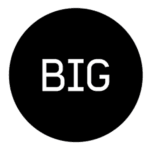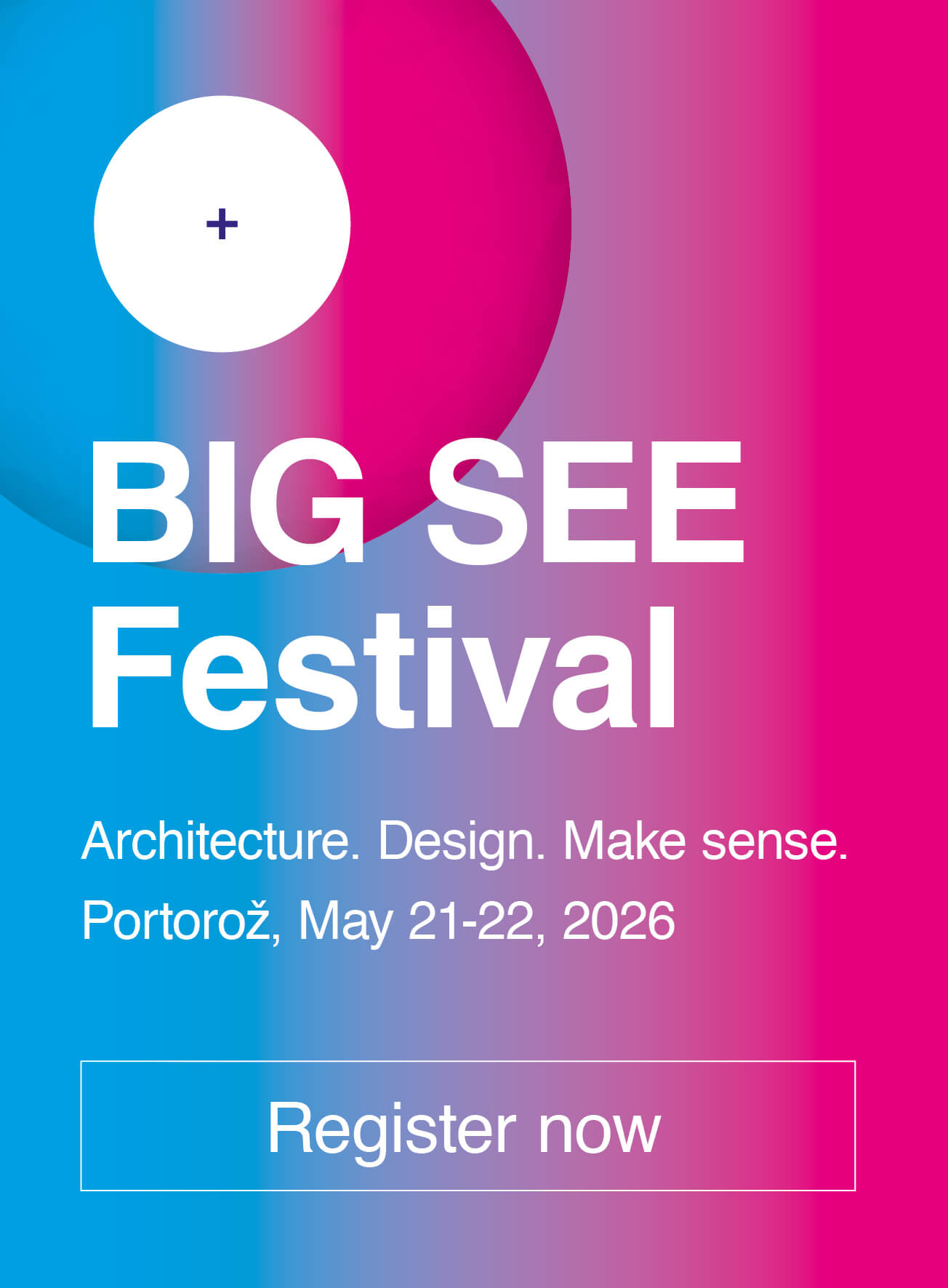This BIG SEE Talk took place in Portorož during the BIG Architecture 2025 event in May, bringing together two architects with a shared educational background at the Architectural Association in London and early professional experience at Zaha Hadid Architects. Both were also honoured with the BIG SEE Grand Prix Award at the event: Melike Altınışık for the Seoul Robot & AI Museum and Jurij Ličen, as part of ENOTA, for the Češča Vas Pool Complex. Their dialogue moves fluidly between architectural education, digital fabrication, and the evolving role of architectural studios in the future.
Watch the video or read the transcript to follow their thoughtful exchange.
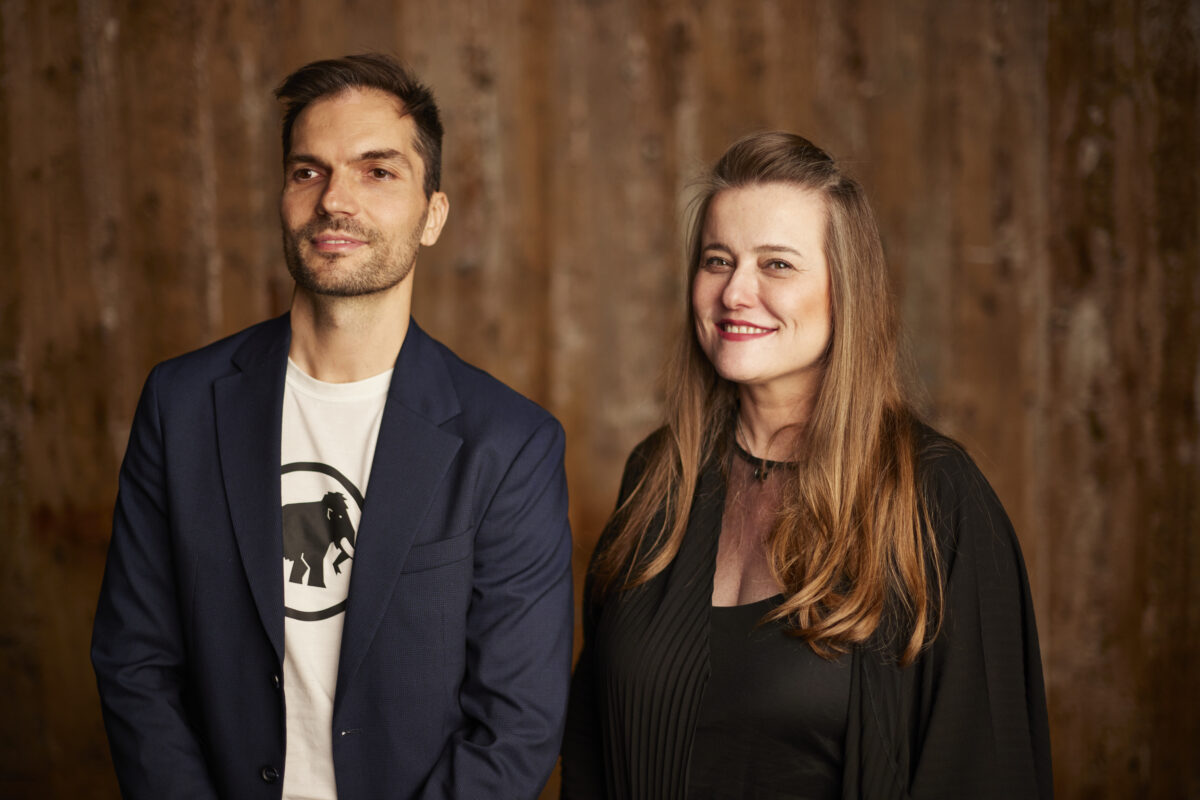
Jurij Ličen: Welcome, Melike. You’re a founder of an architecture office called MAA Melike Altınışık Architects, based in Istanbul and Seoul in South Korea. Your office is known for groundbreaking work, mainly the two projects that come to mind are the radio and TV tower in Istanbul and then the robotics and AI Museum in Seoul in Korea. What’s interesting to me is that you’re trying to merge the human aspect with the technological aspect and nature within design and architecture, bridging different scales from furniture and almost jewelry to large-scale towers and museums. Welcome and thank you for being here.
Melike Altınışık: Thank you very much for this nice introduction. I’m really looking forward to this interview and believe it will be truly fruitful to discuss together.
Jurij Ličen: We both studied at the same school in London, the Architectural Association, and we both did the same masters, the design research lab, and then also worked at the same office for a while, which is Zaha Hadid Architects in London. But maybe we can start with the AA, because I think for both of us, it was an important step. You mentioned in a previous interview that the AA was really about learning how to learn, not so much about somebody telling you what you should know, but really teaching you how to learn, which is quite different from a lot of other schools. At least for me, the AA was a lot about design research and having almost like a scientific approach to designing and cataloging many design options using computational tools. So how do these two approaches that are very present at the AA still impact your life and your career or your approach to design?
Melike Altınışık: It’s nice to hear your question and the way you phrase it. Even though we studied in the same school, there were educational differences between us. The education and vision that the AA was carrying forward always kept the root as much as possible regarding design thinking. For me, being part of the AA in the beginning was very difficult, because I initially did my architectural studies in Istanbul, and coming from a different educational background, then joining a system talking about self-organized systems, possibilities, agents, and everything. Through this, you start to develop a different way of thinking and design thinking. At that moment, you realize that systems are not hierarchical, but you start to see the overlapping patterns of different understandings. This was quite critical for me, because in those years, studying in the design research laboratory, even the name suggests it’s a laboratory. It’s not about the end result, it’s about the process. You need to design the process to think through the process.
“You need to design the process to think through the process. It’s not about the end result.”
– Melike Altınışık
“You design the process, and then you let it drive whatever permutations it produces. The end outcome, as long as it’s consistently mapped out through the process, is almost not as important.”
– Jurij Ličen
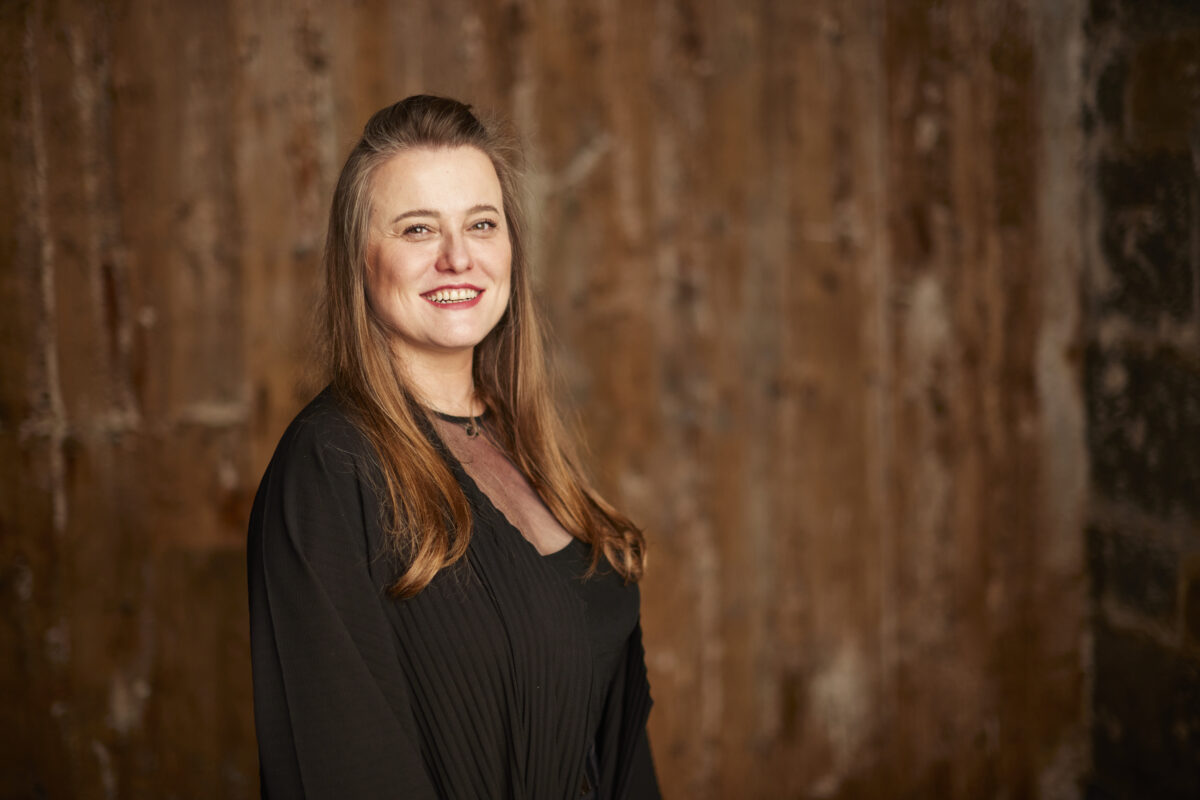
Jurij Ličen: That’s very important because that was also one of the things that was most impactful for me – the fact that you think about the process, and that is almost more important than the outcome. You design the process, and then you let it drive whatever permutations it produces. The end outcome, as long as it’s consistently mapped out through the process, is almost hard to say, but it’s almost not as important.
Melike Altınışık: In the world we live in, especially in built architecture, things are mostly defined by binaries – yes and no, one or zero, white and black. But in these systems and ways of thinking, you start to understand all the in-between situations. You make the invisibles visible. You put all the possibilities on the table and see the missed opportunities. Then you can start filtering and choosing the most optimized solution for whatever reasoning you have. These reasonings may change. The filtering system may change according to the situation, location, or contextual information involved. That’s why I think it’s really critical for us.
“In the world we live in, especially in built architecture, things are mostly defined by binaries – yes or no, black or white. But in these systems, you start to understand all the in-between situations. You make the invisibles visible.”
– Melike Altınışık
Jurij Ličen: But in a way, I think a lot of this design methodology is also enabled by the use of computational and digital tools. Now, because that is a paradigm that lets you produce many different options at the same time, using computers, scripting, and so on. You become almost like a curator of designs, no longer just selecting a design you want, but producing many different options and possibilities using scripts, computers, and then fine-tuning and picking those with particular characteristics.
If we linger on the topic of the AA, your master thesis was also very important. It was published in a book at the time. It was quite heavily inspired by work done by older masters like Frei Otto, but almost what they did in an analog way, you transformed into a digital world. Their experimentation techniques, you transformed from soap bubble experiments or shoe strings they were attaching together, into your own digital lab using Maya at the time. How important was that particular thesis, and is it something that still resonates with you today?
Melike Altınışık: Frei Otto was an important mentor in my research and identity. He was not just an architect, but had an engineering background, mixing disciplines and developing an understanding of space and built environment through research. While he was doing mostly analog research, we were interested in using digital tools to first mimic what he did and then take it into the digital world. We were using Maya, and at the time, we were among the first ones using it. Our full aim was to see the space, both positive and negative parts, especially the structure. We wanted to design the structure’s elegance. Today, when we talk about sustainability, Frei Otto’s research is at the core of what we need to discuss for the future of architecture – reducing structural weight, creating lightweight structures, and reimagining design. His work is critical if we want to talk about sustainability and reducing material use.
That’s why people like Frei Otto have been important mentors for us to carry forward their initial research. With today’s capabilities and digital tools, we can take their work further and reinvent what structure can be. We can explore how to use hybrid systems and mix different structural solutions. These are really important considerations, and we carry this design thinking into our projects at MAA. In each project we start, there’s always something not only related to architectural space, but also to design methodology and construction methodology – how the process evolves is always part of the story.
Jurij Ličen: In many older masters like Frei Otto, Pier Luigi Nervi, or Sergio Musmeci, architecture was always something between engineering and design – a conjunction. In our practice, we also try to make structure the design itself. You try to make the structure elegant and beautiful, and that becomes the building’s design. How important is structure as a design methodology in your office? At Zaha, for example, it was mostly about sculpting a beautiful form and then cladding it with a beautiful envelope, where the structure was not as expressed as in Frei Otto’s work or other similar approaches.
Melike Altınışık: At Zaha, the design was mostly based on circulation. The space was about how you experience and move through it. The form defined the structure, and then you enclosed the envelope to create the building mass. In my practice, the structure is deeply melted into the architectural space. You can see this in how we develop our design process, for example, in the Istanbul TV Tower. What you see as a shape actually drives the structure and gets its form through seismic forces and wind considerations.
Jurij Ličen: I wanted to ask you about the wind, because I think you mentioned this in an interview before. It was interesting how exactly the wind shaped the tower. The tower has a particular geometry – a twisted blob and so on. So how did the wind influence the design?
Melike Altınışık: Wind testing was crucial in developing several versions of the design. Typically, telecommunication towers have a lollipop shape with a large sphere on top of a cone. This is the most engineering-wise simple and safe way of building. But when you want to create something using today’s architectural and engineering capabilities, you simulate different variations. Our building has two faces with an amorphous form that slightly changes. The wind helps create the most efficient aerodynamic solution. For engineers designing a 369-meter tall telecommunication tower, wind calculations are the priority, with seismic considerations secondary. This form helped us find a balance between these forces. It was exciting to be part of this process and find the most optimized solution. We went through multiple wind tunnel tests, examining structural details, facade design, and different seasonal effects on the structure.
Jurij Ličen: In many projects I’ve worked on, there’s a big attempt to use computational tools like computational fluid dynamics to simulate behaviors such as wind and shape the building using these simulations. But I haven’t seen too many successful built projects that really apply these tools and derive the geometry from the data.
Melike Altınışık: It would be fascinating to create a large catalog of these experiments showing how different wind conditions might change the form. It would be super interesting to see a comprehensive collection of these form-finding experiments.
Jurij Ličen: For people like me who are interested in computational design, such a catalog would be amazing to see what was produced just by wind forces.
Melike Altınışık: In our Seoul Robot and AI Museum project, we also took a relatively simple form. There were many reasons for choosing the spherical, elliptical form in elevation. From the top view, you see a spherical relief form because everything was interconnected. The structure is reflected in the facade – you have a steel grid frame where the facade represents what’s happening inside. We used a five-meter by five-meter grid with two-directional curvatures. Our aim was to use this project as a case study to integrate digital fabrication tools and smart construction technologies as much as possible. We didn’t want to create an overly complex form that would make custom fabrication impossible. We really care about structure – it’s not just another element, but a space you inhabit, sometimes on it, sometimes in it, sometimes outside it.
Jurij Ličen: What becomes really interesting is when you take into account how the building is going to be built, considering the particularities of logistics, materials, and construction logic. You use these factors as parameters, not just as something to consider at the end. You can’t assemble just any shape, so you always optimize for assembly, and sometimes the result might be even more interesting if you optimize for construction rather than just creating a form.
Melike Altınışık: When you use digital tools, you shouldn’t just use them for form creation, but fully design the assembly and digital fabrication process. As an architect, you have a say until the end of the project. You don’t just deliver plans and sections; they cannot build it without you because they need your release system. How you define assemblies and optimizations depends on the material you choose. We’ve used different approaches in different projects. For our Challenge Tower, each panel had to be individually molded. In another upcoming project – a headquarters building on a breakwater wall – we’re using a smart molding system with an adaptable machine. Between these two projects, there’s only a six or seven-year difference. In one project, they used 2,500 different CNC molds, while in the new project, there’s just one smart molding system that adapts, and you can directly deliver computer data to it. Carefully designing the assembly and manufacturing process is very critical.
Jurij Ličen: We had a project for a swimming pool roof with complex geometry. The wooden cladding was made of thousands of pieces, all produced using digital tools and CNC cutting. But in a computer, everything fits perfectly, and you don’t account for tolerances. For instance, the steel structure might sag slightly. We had only an eight-millimeter tolerance between wooden pieces, but in the end, it didn’t fit because of structural inconsistencies. We ended up expanding the gaps to two centimeters to absorb all the little inconsistencies.
Melike Altınışık: In computer designs, you can’t always encode real-world construction realities. You have to think through all layers and envision potential on-site problems in advance. Sometimes you need to anticipate issues three years ahead because project timelines and construction schedules differ. Depending on the project scale, this could be six months or even three years.
Jurij Ličen: When you started your office, it was a big decision to leave Zaha and start your own office in Istanbul. How important was your experience from Zaha, and did you have a backup plan if things didn’t work out?
Melike Altınışık: My backup plan was that Zaha told me, “Go explore. We are here.” So this was already a good backup plan. I was really happy at Zaha Hadid Architects and didn’t have any problems, but I wanted to try my own vision from scratch. After seven years of working with Zaha, it was a difficult decision, but I did it. What I learned from the Architectural Association and Zaha was that nothing is impossible. Everything is possible; it just may take time and requires consistent resilience in the process. There will be failures and problems, but if you believe in your vision, you continue walking through it, even if the growth is not linear.
“What I learned at the Architectural Association and Zaha Hadid Architects was that nothing is impossible. Everything is possible; it just may take time and consistent resilience.”
– Melike Altınışık
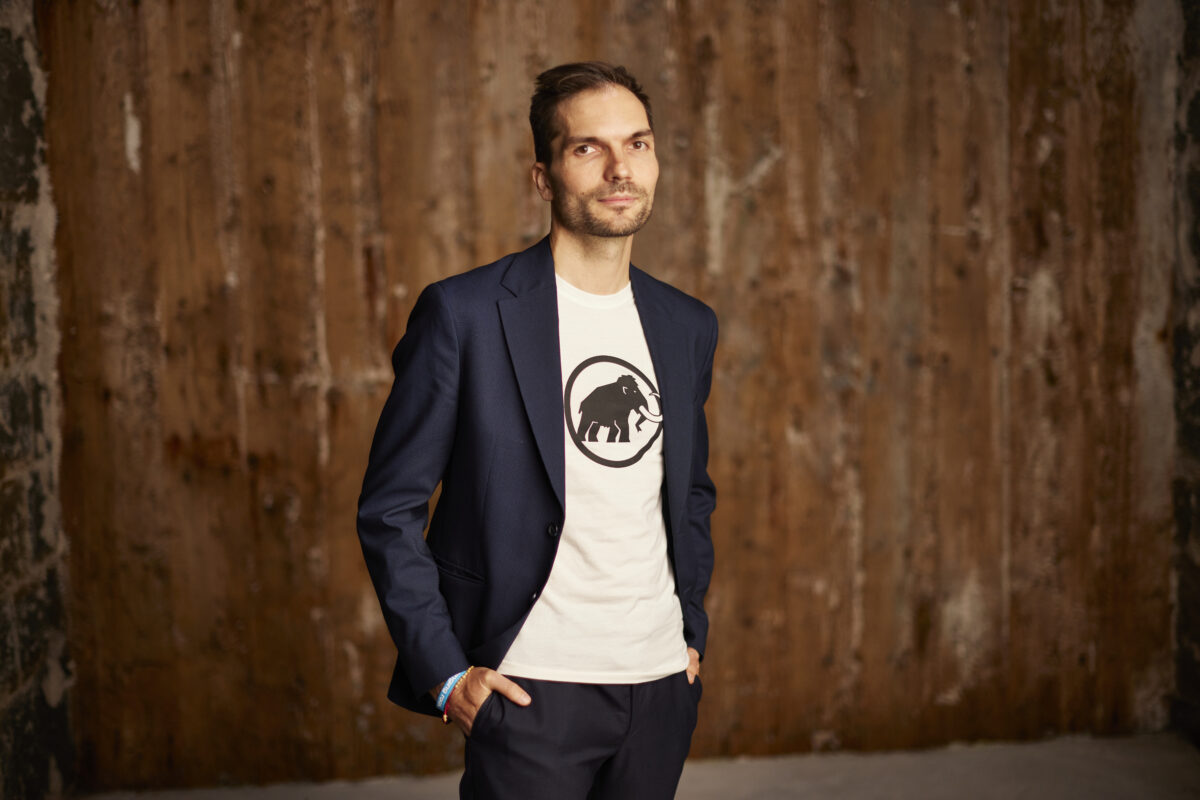
Melike Altınışık: My aim has never been to have a really big office. I want to develop niche projects related to our interests. We don’t need hundreds of projects. We’ll be happy with maybe ten total projects, but each should have something significant to say to the world and the sector. That’s my goal, and we pursue this with my team.
Jurij Ličen: Since we both have experiences working in a large office for a famous architect, do you think this model of a starchitecture office is still relevant in today’s society? Or is it more about having a network of more fragmented, smaller offices that approach things differently?
Melike Altınışık: To be honest, in the next 5-10 years, we will likely live more in micro clusters. Star architecture offices with 400-500 people may still remain because they have their own system, but the world will continue with more fragmented offices of maybe 10-25 people. You will create project-based teams, similar to filmmaking, where you build up a team for a specific project. If you want an amazing, Oscar-winning film, you build a team and get the best people who know their roles. There will always be a director or project lead who organizes, like an orchestra conductor. But you need all the best instruments – people, offices, or teams. This is how I imagine the future: more project-based collaboration.
Jurij Ličen: It’s an interesting approach to have offices with particular expertise collaborating on projects.
Melike Altınışık: Essentially project-based joint ventures. Also, today’s young generation has a different understanding of systems and the world, which makes this future more possible.
Jurij Ličen: I never thought about it that way, looking at it like a film production with a director and so on.
Melike Altınışık: When you come together, everyone puts in their powerful contribution. Isn’t it exciting?
Jurij Ličen: I think it also brings together very different expertise on unique projects that could create some interesting synergies. Well, I think we have to wrap up. It was really great talking to you.
Melike Altınışık: Thank you very much for this wonderful and mind-opening conversation. Thanks a lot.
“Looking at architecture like a film production with a director – everyone puts in their powerful contribution. Isn’t it exciting?”
– Jurij Ličen & Melike Altınışık
Video and portraits by
Primož Korošec
Powered by
This BIG SEE Talk took place in Portorož during the BIG Architecture 2025 event in May, bringing together two architects with a shared educational background at the Architectural Association in London and early professional experience at Zaha Hadid Architects. Both were also honoured with the BIG SEE Grand Prix Award at the event: Melike Altınışık for the Seoul Robot & AI Museum and Jurij Ličen, as part of ENOTA, for the Češča Vas Pool Complex. Their dialogue moves fluidly between architectural education, digital fabrication, and the evolving role of architectural studios in the future.
Watch the video or read the transcript to follow their thoughtful exchange.

Jurij Ličen: Welcome, Melike. You're a founder of an architecture office called MAA Melike Altınışık Architects, based in Istanbul and Seoul in South Korea. Your office is known for groundbreaking work, mainly the two projects that come to mind are the radio and TV tower in Istanbul and then the robotics and AI Museum in Seoul in Korea. What's interesting to me is that you're trying to merge the human aspect with the technological aspect and nature within design and architecture, bridging different scales from furniture and almost jewelry to large-scale towers and museums. Welcome and thank you for being here.
Melike Altınışık: Thank you very much for this nice introduction. I'm really looking forward to this interview and believe it will be truly fruitful to discuss together.
Jurij Ličen: We both studied at the same school in London, the Architectural Association, and we both did the same masters, the design research lab, and then also worked at the same office for a while, which is Zaha Hadid Architects in London. But maybe we can start with the AA, because I think for both of us, it was an important step. You mentioned in a previous interview that the AA was really about learning how to learn, not so much about somebody telling you what you should know, but really teaching you how to learn, which is quite different from a lot of other schools. At least for me, the AA was a lot about design research and having almost like a scientific approach to designing and cataloging many design options using computational tools. So how do these two approaches that are very present at the AA still impact your life and your career or your approach to design?
Melike Altınışık: It's nice to hear your question and the way you phrase it. Even though we studied in the same school, there were educational differences between us. The education and vision that the AA was carrying forward always kept the root as much as possible regarding design thinking. For me, being part of the AA in the beginning was very difficult, because I initially did my architectural studies in Istanbul, and coming from a different educational background, then joining a system talking about self-organized systems, possibilities, agents, and everything. Through this, you start to develop a different way of thinking and design thinking. At that moment, you realize that systems are not hierarchical, but you start to see the overlapping patterns of different understandings. This was quite critical for me, because in those years, studying in the design research laboratory, even the name suggests it's a laboratory. It's not about the end result, it's about the process. You need to design the process to think through the process.
“You need to design the process to think through the process. It’s not about the end result.”
- Melike Altınışık
“You design the process, and then you let it drive whatever permutations it produces. The end outcome, as long as it’s consistently mapped out through the process, is almost not as important.”
- Jurij Ličen

Jurij Ličen: That's very important because that was also one of the things that was most impactful for me - the fact that you think about the process, and that is almost more important than the outcome. You design the process, and then you let it drive whatever permutations it produces. The end outcome, as long as it's consistently mapped out through the process, is almost hard to say, but it's almost not as important.
Melike Altınışık: In the world we live in, especially in built architecture, things are mostly defined by binaries - yes and no, one or zero, white and black. But in these systems and ways of thinking, you start to understand all the in-between situations. You make the invisibles visible. You put all the possibilities on the table and see the missed opportunities. Then you can start filtering and choosing the most optimized solution for whatever reasoning you have. These reasonings may change. The filtering system may change according to the situation, location, or contextual information involved. That's why I think it's really critical for us.
“In the world we live in, especially in built architecture, things are mostly defined by binaries – yes or no, black or white. But in these systems, you start to understand all the in-between situations. You make the invisibles visible.”
- Melike Altınışık
Jurij Ličen: But in a way, I think a lot of this design methodology is also enabled by the use of computational and digital tools. Now, because that is a paradigm that lets you produce many different options at the same time, using computers, scripting, and so on. You become almost like a curator of designs, no longer just selecting a design you want, but producing many different options and possibilities using scripts, computers, and then fine-tuning and picking those with particular characteristics.
If we linger on the topic of the AA, your master thesis was also very important. It was published in a book at the time. It was quite heavily inspired by work done by older masters like Frei Otto, but almost what they did in an analog way, you transformed into a digital world. Their experimentation techniques, you transformed from soap bubble experiments or shoe strings they were attaching together, into your own digital lab using Maya at the time. How important was that particular thesis, and is it something that still resonates with you today?
Melike Altınışık: Frei Otto was an important mentor in my research and identity. He was not just an architect, but had an engineering background, mixing disciplines and developing an understanding of space and built environment through research. While he was doing mostly analog research, we were interested in using digital tools to first mimic what he did and then take it into the digital world. We were using Maya, and at the time, we were among the first ones using it. Our full aim was to see the space, both positive and negative parts, especially the structure. We wanted to design the structure's elegance. Today, when we talk about sustainability, Frei Otto's research is at the core of what we need to discuss for the future of architecture - reducing structural weight, creating lightweight structures, and reimagining design. His work is critical if we want to talk about sustainability and reducing material use.
That's why people like Frei Otto have been important mentors for us to carry forward their initial research. With today's capabilities and digital tools, we can take their work further and reinvent what structure can be. We can explore how to use hybrid systems and mix different structural solutions. These are really important considerations, and we carry this design thinking into our projects at MAA. In each project we start, there's always something not only related to architectural space, but also to design methodology and construction methodology - how the process evolves is always part of the story.
Jurij Ličen: In many older masters like Frei Otto, Pier Luigi Nervi, or Sergio Musmeci, architecture was always something between engineering and design - a conjunction. In our practice, we also try to make structure the design itself. You try to make the structure elegant and beautiful, and that becomes the building's design. How important is structure as a design methodology in your office? At Zaha, for example, it was mostly about sculpting a beautiful form and then cladding it with a beautiful envelope, where the structure was not as expressed as in Frei Otto's work or other similar approaches.
Melike Altınışık: At Zaha, the design was mostly based on circulation. The space was about how you experience and move through it. The form defined the structure, and then you enclosed the envelope to create the building mass. In my practice, the structure is deeply melted into the architectural space. You can see this in how we develop our design process, for example, in the Istanbul TV Tower. What you see as a shape actually drives the structure and gets its form through seismic forces and wind considerations.
Jurij Ličen: I wanted to ask you about the wind, because I think you mentioned this in an interview before. It was interesting how exactly the wind shaped the tower. The tower has a particular geometry - a twisted blob and so on. So how did the wind influence the design?
Melike Altınışık: Wind testing was crucial in developing several versions of the design. Typically, telecommunication towers have a lollipop shape with a large sphere on top of a cone. This is the most engineering-wise simple and safe way of building. But when you want to create something using today's architectural and engineering capabilities, you simulate different variations. Our building has two faces with an amorphous form that slightly changes. The wind helps create the most efficient aerodynamic solution. For engineers designing a 369-meter tall telecommunication tower, wind calculations are the priority, with seismic considerations secondary. This form helped us find a balance between these forces. It was exciting to be part of this process and find the most optimized solution. We went through multiple wind tunnel tests, examining structural details, facade design, and different seasonal effects on the structure.
Jurij Ličen: In many projects I've worked on, there's a big attempt to use computational tools like computational fluid dynamics to simulate behaviors such as wind and shape the building using these simulations. But I haven't seen too many successful built projects that really apply these tools and derive the geometry from the data.
Melike Altınışık: It would be fascinating to create a large catalog of these experiments showing how different wind conditions might change the form. It would be super interesting to see a comprehensive collection of these form-finding experiments.
Jurij Ličen: For people like me who are interested in computational design, such a catalog would be amazing to see what was produced just by wind forces.
Melike Altınışık: In our Seoul Robot and AI Museum project, we also took a relatively simple form. There were many reasons for choosing the spherical, elliptical form in elevation. From the top view, you see a spherical relief form because everything was interconnected. The structure is reflected in the facade - you have a steel grid frame where the facade represents what's happening inside. We used a five-meter by five-meter grid with two-directional curvatures. Our aim was to use this project as a case study to integrate digital fabrication tools and smart construction technologies as much as possible. We didn't want to create an overly complex form that would make custom fabrication impossible. We really care about structure - it's not just another element, but a space you inhabit, sometimes on it, sometimes in it, sometimes outside it.
Jurij Ličen: What becomes really interesting is when you take into account how the building is going to be built, considering the particularities of logistics, materials, and construction logic. You use these factors as parameters, not just as something to consider at the end. You can't assemble just any shape, so you always optimize for assembly, and sometimes the result might be even more interesting if you optimize for construction rather than just creating a form.
Melike Altınışık: When you use digital tools, you shouldn't just use them for form creation, but fully design the assembly and digital fabrication process. As an architect, you have a say until the end of the project. You don't just deliver plans and sections; they cannot build it without you because they need your release system. How you define assemblies and optimizations depends on the material you choose. We've used different approaches in different projects. For our Challenge Tower, each panel had to be individually molded. In another upcoming project - a headquarters building on a breakwater wall - we're using a smart molding system with an adaptable machine. Between these two projects, there's only a six or seven-year difference. In one project, they used 2,500 different CNC molds, while in the new project, there's just one smart molding system that adapts, and you can directly deliver computer data to it. Carefully designing the assembly and manufacturing process is very critical.
Jurij Ličen: We had a project for a swimming pool roof with complex geometry. The wooden cladding was made of thousands of pieces, all produced using digital tools and CNC cutting. But in a computer, everything fits perfectly, and you don't account for tolerances. For instance, the steel structure might sag slightly. We had only an eight-millimeter tolerance between wooden pieces, but in the end, it didn't fit because of structural inconsistencies. We ended up expanding the gaps to two centimeters to absorb all the little inconsistencies.
Melike Altınışık: In computer designs, you can't always encode real-world construction realities. You have to think through all layers and envision potential on-site problems in advance. Sometimes you need to anticipate issues three years ahead because project timelines and construction schedules differ. Depending on the project scale, this could be six months or even three years.
Jurij Ličen: When you started your office, it was a big decision to leave Zaha and start your own office in Istanbul. How important was your experience from Zaha, and did you have a backup plan if things didn't work out?
Melike Altınışık: My backup plan was that Zaha told me, "Go explore. We are here." So this was already a good backup plan. I was really happy at Zaha Hadid Architects and didn't have any problems, but I wanted to try my own vision from scratch. After seven years of working with Zaha, it was a difficult decision, but I did it. What I learned from the Architectural Association and Zaha was that nothing is impossible. Everything is possible; it just may take time and requires consistent resilience in the process. There will be failures and problems, but if you believe in your vision, you continue walking through it, even if the growth is not linear.
“What I learned at the Architectural Association and Zaha Hadid Architects was that nothing is impossible. Everything is possible; it just may take time and consistent resilience.”
- Melike Altınışık

Melike Altınışık: My aim has never been to have a really big office. I want to develop niche projects related to our interests. We don't need hundreds of projects. We'll be happy with maybe ten total projects, but each should have something significant to say to the world and the sector. That's my goal, and we pursue this with my team.
Jurij Ličen: Since we both have experiences working in a large office for a famous architect, do you think this model of a starchitecture office is still relevant in today's society? Or is it more about having a network of more fragmented, smaller offices that approach things differently?
Melike Altınışık: To be honest, in the next 5-10 years, we will likely live more in micro clusters. Star architecture offices with 400-500 people may still remain because they have their own system, but the world will continue with more fragmented offices of maybe 10-25 people. You will create project-based teams, similar to filmmaking, where you build up a team for a specific project. If you want an amazing, Oscar-winning film, you build a team and get the best people who know their roles. There will always be a director or project lead who organizes, like an orchestra conductor. But you need all the best instruments - people, offices, or teams. This is how I imagine the future: more project-based collaboration.
Jurij Ličen: It's an interesting approach to have offices with particular expertise collaborating on projects.
Melike Altınışık: Essentially project-based joint ventures. Also, today's young generation has a different understanding of systems and the world, which makes this future more possible.
Jurij Ličen: I never thought about it that way, looking at it like a film production with a director and so on.
Melike Altınışık: When you come together, everyone puts in their powerful contribution. Isn't it exciting?
Jurij Ličen: I think it also brings together very different expertise on unique projects that could create some interesting synergies. Well, I think we have to wrap up. It was really great talking to you.
Melike Altınışık: Thank you very much for this wonderful and mind-opening conversation. Thanks a lot.
"Looking at architecture like a film production with a director – everyone puts in their powerful contribution. Isn’t it exciting?"
- Jurij Ličen & Melike Altınışık


